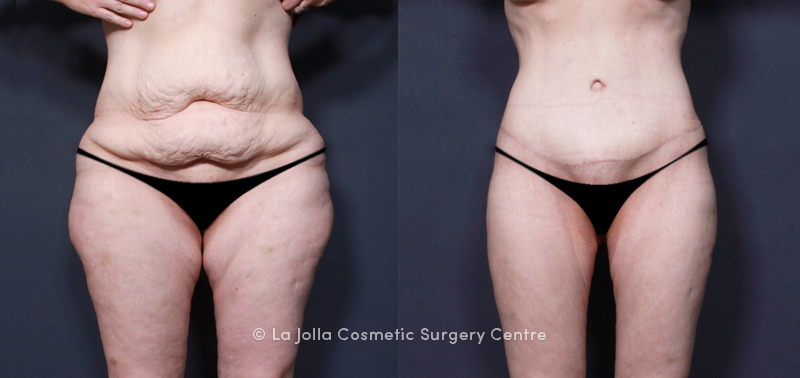Excess skin after weight loss surgery is a common issue. Many people seek solutions for this concern.
Weight loss surgery can lead to significant changes in your body. With the loss of fat, excess skin often remains. This leftover skin can affect your confidence and comfort. Addressing it usually involves additional procedures, which come with costs. Understanding these costs can help you plan better.
In this blog, we will explore the expenses related to excess skin removal after weight loss surgery. We will discuss factors that influence the cost and provide insights to help you make informed decisions. So, if you are curious about managing excess skin and its financial aspects, keep reading. This guide aims to shed light on everything you need to know.
Causes Of Excess Skin
Rapid weight loss can cause excess skin. This happens because the skin cannot shrink as fast as the body. Skin elasticity varies among people. Younger people have more elastic skin. Older people may find their skin does not bounce back. This results in loose, hanging skin. Losing weight slowly can help reduce this problem. But, surgery may be needed to remove the excess skin.
Age affects skin elasticity. Young skin is more elastic. It stretches and shrinks better. As we age, skin loses its elasticity. This means it does not shrink back after weight loss. Older skin may sag more after losing weight. Genetics also play a role. Some people naturally have less elastic skin. This can lead to more excess skin after weight loss.

Credit: www.vidawellnessandbeauty.com
Surgical Solutions
Body lift helps remove excess skin from the body. Tummy tuck targets the abdominal area. Arm lift focuses on removing extra skin from the upper arms. Thigh lift addresses loose skin on the legs. Breast lift helps reshape and lift sagging breasts.
Benefits include improved appearance and comfort. People often feel more confident. Risks involve possible infections and scarring. Healing time can be long. Complications may need further surgery.
Cost Factors
Surgeon’s fees can vary greatly. Experience and reputation affect the cost. A skilled surgeon might charge more. This fee often covers the consultation. It also includes the surgery itself.
Hospital charges include room fees. Equipment and medication are also part of the cost. Private hospitals are more expensive. The length of stay impacts the total amount. Some hospitals offer package deals.
Post-surgery care involves follow-up visits. It may include physical therapy. Medication and dressings are also needed. These can add to the total cost. Proper care is important for healing.

Credit: www.ljcsc.com
Insurance And Financing
Insurance may cover part of the surgery cost. It’s important to check with your provider. Some plans include skin removal after weight loss. Others do not. Always verify what your plan covers.
Many clinics offer payment plans. These plans break the cost into smaller payments. This makes surgery more affordable. Ask your clinic about available options. They usually have several plans.
Medical loans are another option. These loans help pay for surgery costs. Some banks and companies provide these loans. Compare interest rates before choosing a loan. This ensures you get the best deal.
Non-surgical Alternatives
Excess skin after weight loss surgery can be addressed without surgery. Non-surgical options often cost less and provide effective results. These alternatives include treatments like laser therapy and radiofrequency.
Exercise And Diet
Regular exercise can help tone muscles and improve skin elasticity. Focus on strength training and cardio exercises. Strength training builds muscle and reduces loose skin. Cardio helps burn fat and improves overall health. A balanced diet is also important. Eat foods rich in vitamins and proteins. Stay hydrated to keep skin healthy. Avoid processed foods and sugary drinks. Consistency is key for best results.
Skin Tightening Treatments
There are various skin tightening treatments available. Laser therapy can help improve skin texture. Radiofrequency treatments boost collagen production. Ultrasound therapy tightens deeper skin layers. These treatments are non-invasive and have minimal downtime. Results may vary and multiple sessions might be needed. Always consult a professional before starting any treatment. They can recommend the best option for your skin type.
Choosing The Right Surgeon
Choose a surgeon with board certification in plastic surgery. Check their experience in dealing with excess skin removal. Look for positive reviews from past patients. A good surgeon should have completed many successful surgeries. Ensure they have a clean medical history. Their clinic should be accredited and well-maintained.
Prepare a list of questions before the consultation. Ask about the procedure details and expected recovery time. Clarify the total cost involved, including any hidden fees. Discuss any risks and potential complications. Ask to see before and after photos of previous patients. Be honest about your medical history and any medications you take. Ensure you feel comfortable and confident with the surgeon.
Success Stories
Many patients feel happy after their weight loss surgery. They enjoy their new look. Friends and family often notice their change. Patients gain more confidence. They feel more comfortable in their skin. They share their stories with others. These stories inspire many people. The journey is not always easy. But the results are worth it. Support from loved ones helps a lot. Many join support groups. These groups offer help and advice. Patients feel they are not alone. They share tips and tricks for healing. This makes the journey smoother. Their stories give hope to others.
Before surgery, many feel low and tired. Their skin feels tight. After surgery, they see a big change. Their skin feels better. They can move more easily. They fit into new clothes. Their smiles are bigger. They are happier. These changes show in pictures. Many take photos before and after. They see their hard work pay off. Their eyes shine brighter. They feel proud of their journey. These photos inspire others. They show that change is possible. Each photo tells a story. A story of hard work and joy.

Credit: www.denefits.com
Frequently Asked Questions
What Is The Cost Of Excess Skin Removal Surgery?
The cost of excess skin removal surgery varies. It ranges from $8,000 to $15,000. Prices depend on the procedure’s complexity and the surgeon’s expertise.
Does Insurance Cover Skin Removal After Weight Loss?
Insurance may cover skin removal if it’s deemed medically necessary. Coverage varies by provider and policy. Contact your insurance company for specifics.
How Long Is Recovery After Skin Removal Surgery?
Recovery time after skin removal surgery typically ranges from 2 to 4 weeks. Complete healing can take several months. Follow your surgeon’s post-op instructions for the best outcome.
Are There Risks Associated With Skin Removal Surgery?
Yes, there are risks like infection, scarring, and anesthesia complications. Discuss potential risks with your surgeon. Proper post-operative care can minimize these risks.
Conclusion
Excess skin after weight loss surgery is a common concern. Addressing it involves costs. These costs vary based on several factors. Each person’s situation is unique. Consulting a professional helps determine the best approach. Budgeting for this can aid in planning.
Consider all options and make informed decisions. Your journey to a better you is important. Investing in your health and confidence is worth it. Always prioritize your well-being.

